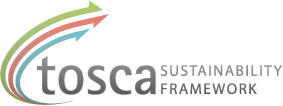Scientific state of the art on sustainable supply chain management
Welford (2003) argue that environmental management systems (EMS) have become the dominant technique within environmental management, but that this is turning out to be of little use since companies more and more outsource their products to other companies. To get around this problem the author states that EMS should be replaced with environmental supply chain management (ESCM) and that companies should practice extended producer responsibility, product stewardship and life-cycle assessment (LCA). For ESCM to be effective, Welford (2003) suggests that companies must; 1) take active part in the whole supply chain, 2) have explicit supplier standards and that suppliers follow the highest environmental standards, 3) integrate environmental issues into purchasing and procurement policies, 4) have suitable end-of-life solutions, 5) control and monitor all stages of the supply chain, 6) have committed senior management, 7) have close cooperation between the companies along the supply chain, and 8 ) through training and education be able to identify important inter-linkages along the supply chain. Finally, companies are required to explore alternatives within reverse logistics, reverse of materials flow, as well as dematerialization.
Seuring and Muller (2008) also describe how processes are spread widely between companies and that this is followed by the environmental and social burden associated with different stages of the production. Instead of ESCM, the authors use the term sustainable supply chain management (SSCM) and define it as “the management of material, information and capital flows as well as cooperation among companies along the supply chain while taking goals from all three dimensions of sustainable development, i.e., economic, environmental and social, into account which are derived from customer and stakeholder requirements” (Seuring & Muller, 2008, p. 7).
The concept of SSCM is also used by Fitzgerald et al. (2007) who describe that there have emerged two types of SSCM strategies: 1) supplier assessment, and 2) supplier engagement. The supplier assessment strategy contains actions such as: 1) distribution of code of conduct to all members of the supply chain, 2) to perform audits to verify compliance with the code of conduct, and 3) to use evaluation systems to determine a new supplier’s sustainability status. The supplier engagement strategy on the other hand is built on the relationship between a company and its supplier and focus on: 1) educating the supplier about sustainability, 2) working closely with them to integrate sustainability into their core business strategy as well as throughout their operations.
References
Fitzgerald, S.E., Luck E.A. & Morgan, A.L. (2007). Strategies for Sustainable Supply Chain Management: Supplier Interaction Devices.
Seuring, S. & Muller, M. (2008). From a literature review to a conceptual framework for sustainable supply chain management. Journal of Cleaner Production. 16(15), 1699-1710.
Welford, R. (2003). Beyond Systems: A Vision for Corporate Environmental Management for the Future. Key note paper, Science days for the Studia Economia lecture series, Helsinki School of Economics.

